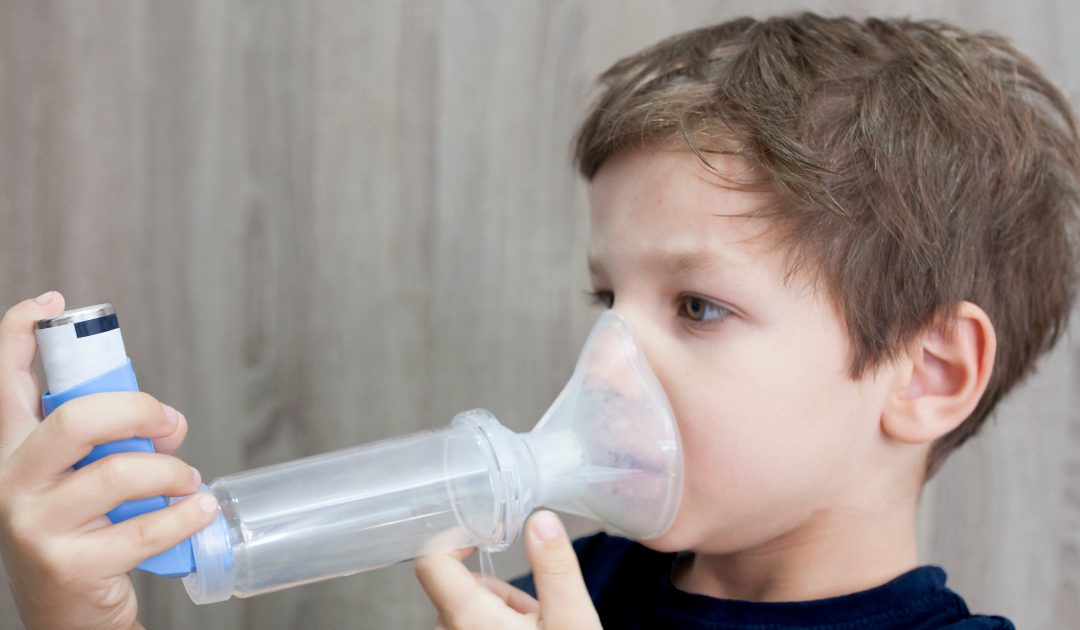As the back-to-school excitement fills the air, so does an annual health concern: the September Spike in asthma-related emergency visits. This increase starts after the return to school and reaches its peak in September. Being ready for the September Spike helps ensure that your child is able to spend more time at school, learning and spending time with their friends, instead of visiting the hospital or the emergency room!
Why are there more asthma-related ER visits in September?
Several factors contribute to the September Spike:
- Exposure to Respiratory Illnesses: As students return to school, they come into close contact with peers, making it easier for respiratory illnesses to spread. This heightened exposure can trigger asthma exacerbations, particularly if their asthma is poorly controlled.
- Allergens: Schools can harbor allergens such as dust mites, mold, and pet dander, which can worsen asthma symptoms in susceptible children. September is also ragweed season, which is known to trigger asthmatic responses.
- Change in Routine: The shift from the relaxed summer schedule to the structured school day can increase stress, which is a known asthma trigger. Students may also be taking part in more physical activities and sports, which can also play a role in the September Spike.
What can you do to prevent “Asthma attacks”:
- Update Asthma Action Plans: Ensure your child’s asthma action plan is up to date. Share it with school staff and make sure they are familiar with your child’s needs.
- Medication Management: Ensure medications are readily available and not expired. Discuss medication schedules with the school nurse, your child’s teacher, and any other staff if necessary.
- Regular Check-Ups: Schedule a check-up with your healthcare provider to assess asthma control and update prescriptions if needed.
- Communication: Maintain open communication with teachers and school staff regarding your child’s asthma. They should be aware of any triggers or specific needs.
A key part of preventing asthma related ER visits is avoiding getting sick. Influenza, COVID-19, RSV all pose a threat to respiratory health as back-to-school begins. Talk with your child about how to prevent the spread of respiratory illness.
Preventing the Spread of Respiratory Illnesses:
- Hand Hygiene: Teach your child proper handwashing techniques, emphasizing the importance of frequent handwashing, especially before eating and after using the restroom.
- Mask-Wearing: Masks are a powerful tool in our battle against respiratory illnesses. They help reduce the spread of germs, protecting both you and those around you. Please consider sending a mask to school with your child, and talk to them about the importance of masking.
- Vaccination: If eligible, ensure your child receives recommended vaccinations for COVID-19, Influenza, and RSV. Consult your healthcare provider for guidance on vaccinations.
- Ventilation: Encourage schools to maintain good ventilation to reduce the concentration of airborne pathogens. Consider contacting your MLA, encouraging them to prioritize clean indoor air.
- Stay Informed: Keep an eye on public health recommendations and be prepared to adapt your preventive measures based on the current COVID-19 and respiratory illness situation in your area.
Resources:
NB Lung’s Asthma Page
NB Lung’s Asthma Fact Sheet
NB Lung’s Asthma Action Plan
Asthma Canada
Creating a Clean-Air Room in your home with a DIY Box Fan Filter

